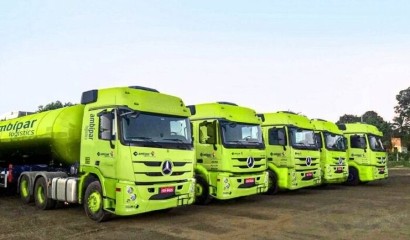Restructuring clouds gather over solar developers
Utility-scale solar developers are facing a cash crunch as financing necessary to complete projects dries up and construction costs continue to rise.
Restructurings in some cases loom as prospects for the sector dim under a new presidential administration scuttling government programs that had supported the industry’s rise, said sector advisors.
Capital poured into renewable energy projects in the years after the pandemic as investors hunted for yield and hoped to capitalize on generous tax incentives provided by then President Joe Biden’s signature Inflation Reduction Act (IRA). Investment came even as developers struggled with supply chain delays and inflation.
“That broad swath of investors, some of whom were potentially speculative . . . [has] narrowed significantly to now people who really know what they’re doing, but even they aren’t really putting capital to risk,” said a sector advisor.
Developers who started projects on the back of the IRA are now left in a lurch.
“Folks building utility-scale solar, battery and wind projects are insolvent. Many of them can’t go through a normal bankruptcy process because if you do that to a project company, it basically kills the project, so all the creditors are getting together and trying to figure that out,” said Carlos Mendez, the cofounder and managing partner at Crayhill Capital Management, at a recent conference organized by Bloomberg.
North Carolina-based Pine Gate Renewables is one major developer that’s already reportedly mulling a restructuring. The company laid off hundreds of employees in September at its Blue Ridge Power subsidiary that provided engineering and construction services, citing “evolving regulatory and capital market environments,” according to WARN notices.
Pine Gate has engaged advisors to work on rescue financing and negotiate with creditors ahead of a potential bankruptcy filing, according to Bloomberg News. A representative for Pine Gate did not respond to request for comment.
Fast-growing developers must contend with keeping track of multiple projects with their own capital structures, said a second sector advisor. This can lead developers to be overstretched operationally, as well as financially.
“What happens when the music stops?” the second sector advisor asked. “The real issue [for] those companies is figuring out issues around keeping the projects separated.”
Residential solar firms like Sunnova and Solar Mosaic already have been forced into restructurings this year after capital markets closed in the wake of President Donald Trump’s reelection.
Along with tight credit markets and declining government incentives, project costs are soaring.
“What looked good on paper at the outset has often not been so as reality has played out. Stubbornly high interest rates, supply chain challenges, and government support programs changing for the worse can shine a bright light on situations where management teams aren’t able to pivot,” said Chris LeWand, the global practice leader of the power and energy team at FTI Capital Advisors.
Trump has imposed steep tariffs on key inputs for solar installations, including metal and electrical components, in addition to targeting counties that started producing panels after tariffs were imposed on China, the global leader in solar.
The president’s One Big Beautiful Bill Act, passed this summer, implemented acreage rents and capacity fees for solar projects located on federal lands.
The legislation and other executive orders have also raised questions about whether the federal government will support federal leasing for renewables like solar. Under Trump, federal permitting now must undergo intensified scrutiny from the Department of the Interior.
This scrutiny has reached some of the biggest developing solar projects. In early October, the Interior Department halted efforts to build Esmeralda 7—a Nevada project slated to become one of the largest solar installations in the US—throwing its future into doubt.
The mega-project, backed by NextEra Energy and developers including Arevia Power, Invenergy, Leeward Energy, ConnectGen, and Avantus, was designed to combine seven solar arrays.
Many public solar firms—from NRG Energy to Clearway, Fluence Energy, and Bloom Energy—have warned about cost pressures and potential project disruptions in recent SEC filings.
Even if developers secure the financing and equipment to move forward, time isn’t on their side.
Solar tax credits are being revised and largely phased out under federal policies, forcing many solar developers to accelerate construction to meet new qualification deadlines. For example, projects started by July 2026 must be functioning by December 2027 to access credits under revisions to the Clean Electricity Production Tax Credit program.
“That’s created a lot of uncertainty and risk around any new developments becoming shovel-ready before that time,” said Scott Tandberg, a partner and managing director at AlixPartners. “Literally every factor is working against [developers] right now.”
Longer term, though, solar projects are still seen as competitive with other sources of power.
“Solar is already often cheaper without subsidies than other forms of power and batteries provide dispatchable power needed. There may be increasing industry consolidation to reach economies of scale, but this is a fundamentally healthy sector beyond the short term, in particular considering growing power demands, national security issues and yes, it still does matter, decarbonization,” said FTI’s LeWand.












